LG 29EA93 Monitor Review - Rev. 1.25
by Chris Heinonen on February 12, 2013 8:49 PM ESTOnce again we are copying our charts from our Tablet and Smartphone workflow here for monitors. As I mentioned earlier, you can’t compare these to prior results due to the use of dE2000 for numbers. Another key change here is the ability to use meter profiling for doing measurements, which I’ll elaborate on here a bit to put these numbers into context.
There are two main types of meters: colorimeters and spectrometers. Colorimeters are usually cheaper, and use color filters to read the different colors of light. Spectrometers often cost more but actually “read” the light instead of using filters. This difference is key as color filters were very good when the only light sources were CRTs or CCFL lamps, but now with White and Multi-colors LEDs, and OLED displays, we have light with a different spectral makeup than before, which the filters are often not designed around. This can cause a colorimeter to have incorrect readings but a spectrometer will not.
The reason we don’t always use spectrometers is because they are much slower, and they read at low light much worse that a colorimeter. With meter profiling, you use a spectrometer and colorimeter to read colored patches from a display, and then the software analyzes the results. This creates a 3x3 correction matrix for the colorimeter that then allows it to correctly read the light from the display, even if it is LED or OLED based. The key thing here is this now allows us to read shadows better, and do more readings to produce better results.
The main area of difference here is going to be in blues. Compared to 100% White, 100% Blue has only 7% of the light output, making it very dim. This makes it harder to read for a spectrometer, which makes it more prone to error. Now that we can use a profiled colorimeter to make this reading, and in my case use a C6 meter that can average 10 results at a time to produce a more accurate number, our blue numbers may be different than before, but they will be more accurate.
| Pre-Calibration | 200 cd/m² Target | 80 cd/m² Target | |
| Primary and Secondaries dE2000 | 2.3002 | 1.4839 | 2.0847 |
| Colorchecker dE2000 | 2.1689 | 1.0185 | 0.9915 |
| Saturations dE2000 | 1.7017 | 1.0126 | 1.1254 |
With that out of the way, we can look at the CIE gamut chart and see that the LG 29EA93 has a bit more than the sRGB gamut available, with reds and greens that extend beyond the CIE triangle. Pre-calibration our numbers look very good, but with a bit of over-saturation in the reds and greens. The 200 cd/m² calibration numbers look better than the 80 cd/m² when it comes to the CIExy chart, but frankly I’m more concerned with the color checker and saturation charts. Most people only focus on the CIE chart, but it really just shows the performance of 6 colors and the size of the gamut, but tells you nothing about the performance of the other 16.7 million colors you might use.
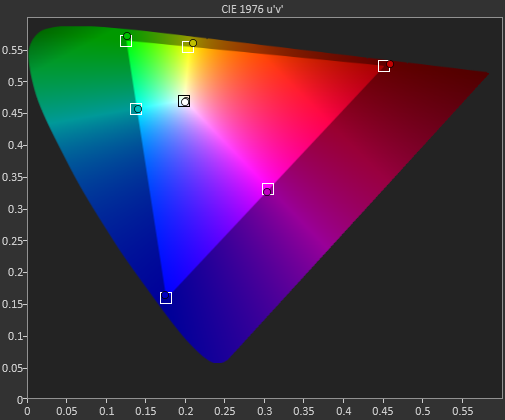
Pre-calibration, the dE2000 number for the Color Checker chart is quite good on the LG 29EA93. Until we have more monitors done with the new workflow we can’t be certain of how good this is, but overall it does look very nice. The main issues are in pure white, and those Yellow-Red-Green tones that fall at the edge of the gamut. The bit of over-saturation that we saw earlier causes these to be a bit too-rich and leads to some visible errors there.
After calibration, only those over-saturated colors provide anything to care about at all. Beyond those four points, the other 20 samples are nearly perfect, with no visible error at all even in blues. If those final four points were perfect there would be nothing to complain about at all with the LG 29EA93, but even with them it produces overall dE2000 numbers that are fantastic.
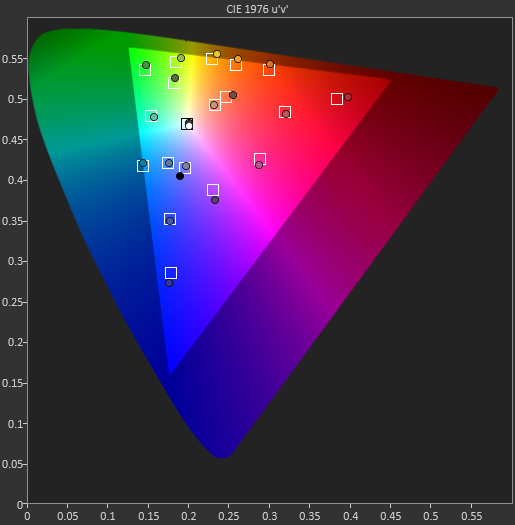
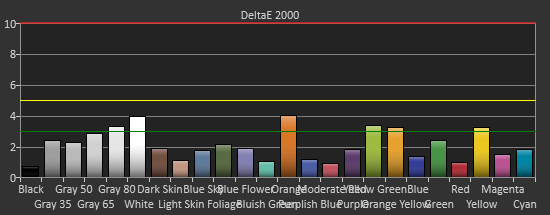
Pre-calibration, the saturation numbers for the LG are good, but you can see quite a few of the measurements are at or close to the dE2000 3.0 mark. Post-calibration this improves, especially the 20% data, with only the 100% green and yellow color swatches measuring over 3.0, and only four measurements total over a dE2000 of 2.0. The calibrations push the saturation measurements from good to excellent.
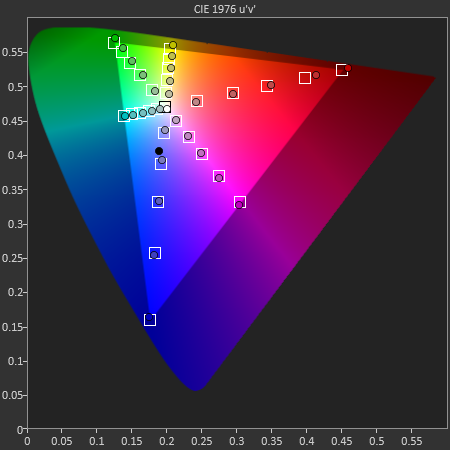
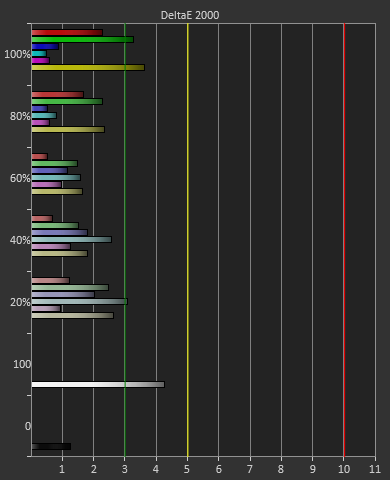
Taking these measurements in full, it seems that after calibration, the only place you will see any color errors on the LG 29EA93 is in a fully saturated red, green, or possibly yellow. As soon as the saturation drops below 100% the error level drops drastically, and you won’t be able to see an error at all. Unless you start at a pure-red screen all day long, the color of the LG 29EA93 is going to be very impressive.











108 Comments
View All Comments
Friso - Wednesday, March 27, 2013 - link
So when are you going to update your review? This is turning into a bit of a joke here, with you raving about a version 1.25 and nobody having the means to verify what version they're actually buying. I have a box standing in front of me. How can I verify whether it's the 'good' version? Without this info, this is a legendary bit of PR by LG, allowing them to sell off all their old stock.GeoffMorris - Monday, April 1, 2013 - link
I agree with Friso.LG needs to know that many find this situation unacceptable and all this doubt is no doubt putting people off buying the monitor. I tried to contact them myself but couldn't seem to find an email address for my country (Japan).
If they were so willing to work with you to iron out the issues product surely you have some way of letting them know that the situation as it stands is probably doing more harm than the 1.09 review.
newsama - Sunday, May 26, 2013 - link
Hey, did you manage to get that image? I'm really scared of shelling out 700 bucks only to get the crappy version =/jjj - Tuesday, February 12, 2013 - link
This is nice but in cases like this the review should be done on a retail unit just to be sure about what is in stores.The pricing is also way high , i imagine the AOC will retail at 500$ and that's still high but at least it's not 700$.
I do wish you would have more screenshots (gaming included) and a video wouldn't hurt, the AR is new , would help to see it in action.
cheinonen - Wednesday, February 13, 2013 - link
I will try to get some screenshots of games if I can, though the site someone linked earlier does provide a good example of showing the differences in aspect ratios. As far as the AOC, it makes no sense to compared the LG against something that isn't released yet. Look at the large difference in how this updated version performed against the original version. We have no way of knowing which one the AOC will perform like, or if it will be better or worse. It will use the same panel I imagine, but that's only one element as we've seen here.As far as retail samples go, the initial sample was the foreign model as it wasn't out in the USA, and then the USA launch was delayed until the issues were fixed, so there was no possible way to get a review unit at a store. It also is cost prohibitive to impossible to buy samples, and with as many issues as every reviewer manages to find with the review samples, believe me, if there's an issue in the product, we're almost certainly going to find it no matter what sample we get.
KLC - Wednesday, February 13, 2013 - link
I agree with jjj, it's more than a little concerning that LG hand carried a new monitor to you for a special review. How will a retail version compare to this hand picked one? Nobody knows.cheinonen - Wednesday, February 13, 2013 - link
They hand carried the initial model to me as well, if that makes you feel better about it, so I don't think that has any effect on the performance or what I find in testing.KLC - Wednesday, February 13, 2013 - link
Of course it doesn't have any effect on performance or what you found, I'm not impugning either you or your results. But let's face it, corporations exist to generate revenue, LG wants to sell monitors. What better way to sell them than to get positive reviews? Why is it startling to suggest that they may tweak a piece of hardware in order to get one?cheinonen - Thursday, February 14, 2013 - link
My question is how this review would be different than any other review then? Every display I've reviewed for AnandTech, aside from the iPhone 5 I bought myself, has been shipped from a company or a PR firm.I'm well aware of the fact that monitors could be sent that are ideal units, and so I attempt to read feedback from people that already own them on forums often to see what issues might exist to look for. To me, this unit is no more likely to be extra special than any other unit that comes in for review.
Look at every other review that I've written, positive or negative, and see how many other companies have followed up to find out what they can do to improve their performance and then attempted to do so. Even when I've received feedback, it's been nothing close to this, and typically more defensive than actually inquisitive about how to improve performance.
I'm certain someone else out there will buy a unit and test it and see if they match up. If they have a huge variance between them, then we can start to look into it more.
Lifted - Tuesday, February 12, 2013 - link
Reading the title I had no idea if you like the product.Not realizing or remembering that this is a followup article, and then reading the first few sentences, I was sooo close to just moving along and not waste my time reading a review of what I assumed was an absolutely horrible product.
I believe Anand usually puts some clue in the title of the review if there has been a major change in the product. This is not just a good idea for your readers, but also for yourself after spending so much time on this (you want people to read it, yes?), and LG for going above and beyond in getting this monitor right, which is extremely rare these days.